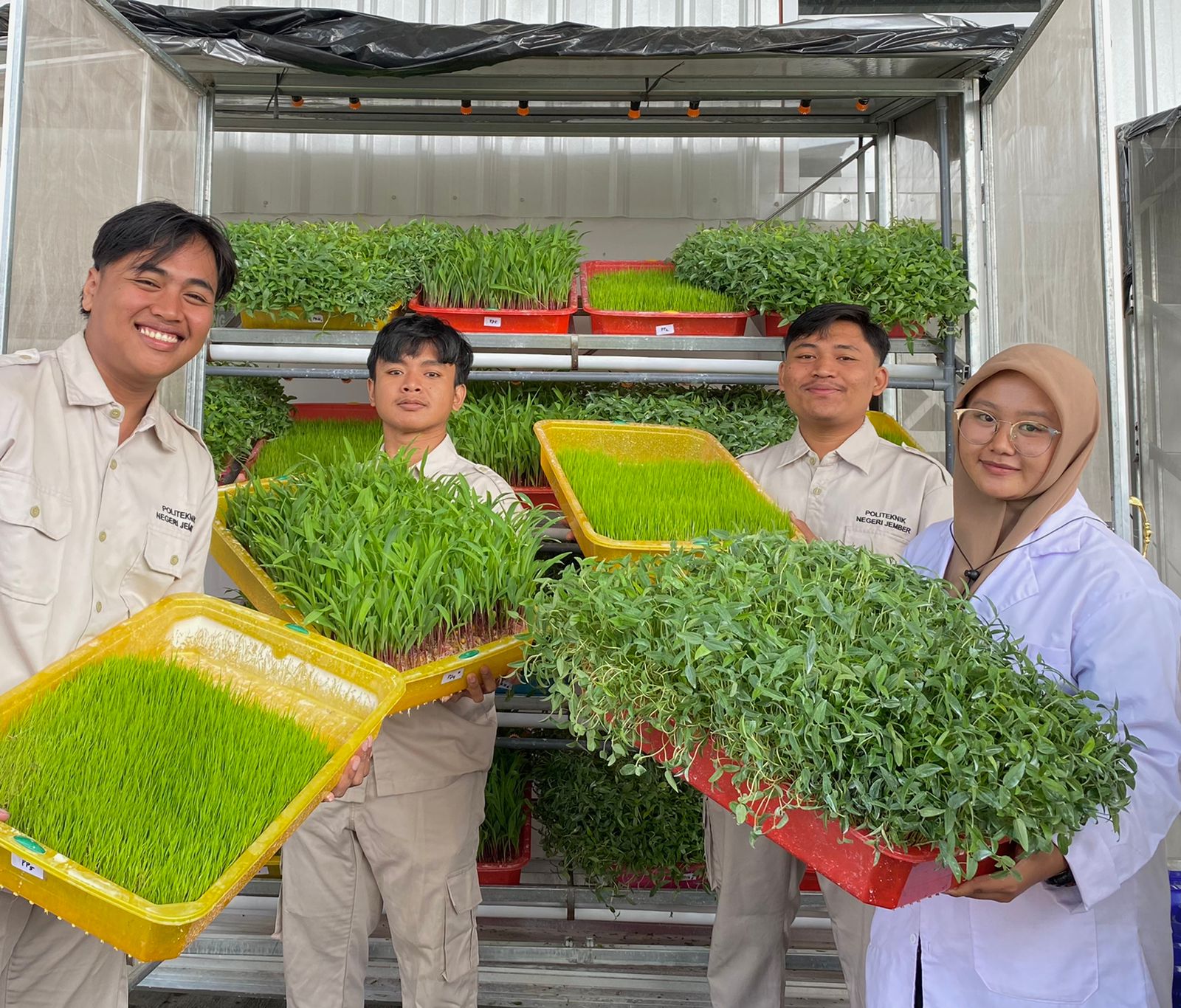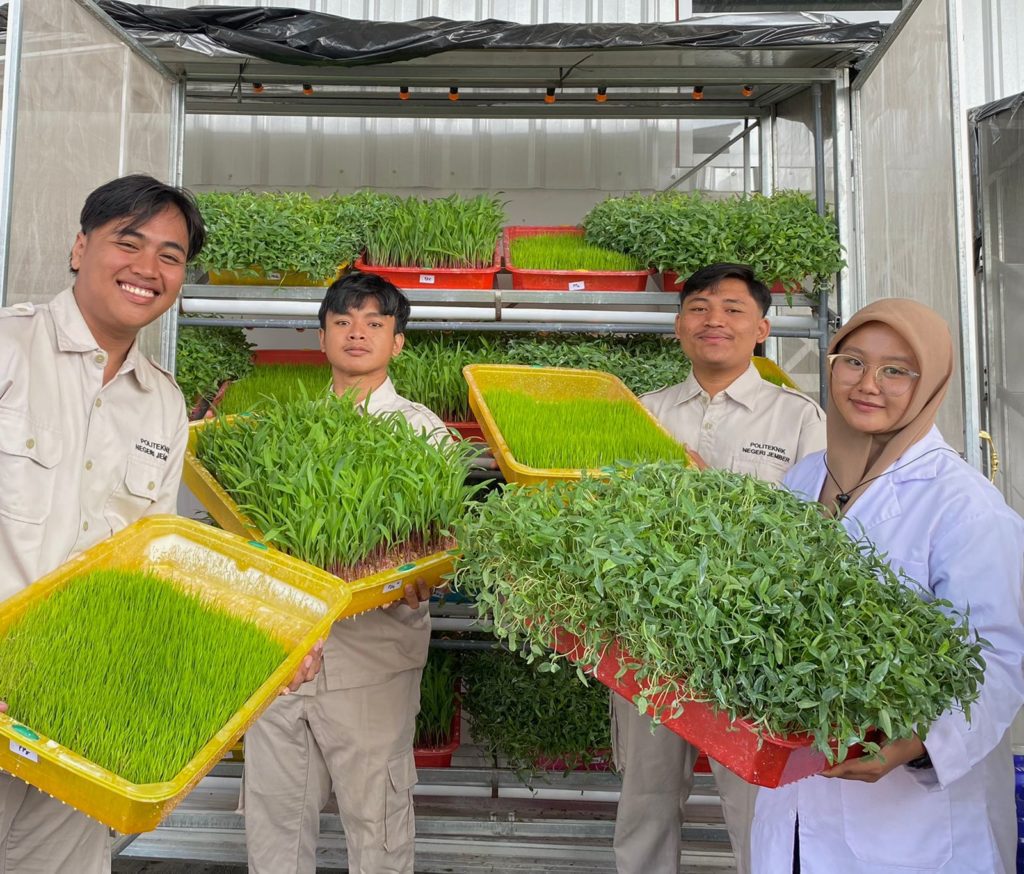

In an effort to overcome the limitations of forage land and improve the quality of animal feed, a team of researchers from the Politeknik Negeri Jember (Polije) Animal Husbandry Department, led by Dr. Ir. Suci Wulandari, M.Si., IPM, together with students of the Animal Feed Technology Study Program, conducted research on hydroponic fodder. This research aims to develop efficient and high-quality alternative feed for ruminants and non-ruminants.
Hydroponic fodder is a feed production system that uses hydroponic techniques, which allows the growth of plants without soil. The main advantage of this method is that the harvest period is very short, only about 7-10 days. In addition, the feed produced has a high nutrient content and a good digestibility rate. Another uniqueness of hydroponic fodder is that all parts of the plant can be utilized by livestock, so no part is wasted.
In addition to superior nutritional quality, hydroponic fodder also offers a solution to the various challenges faced by farmers. Independent of the season, this technology can provide consistent forage throughout the year, even during the dry season when forage is usually scarce and expensive. In addition, hydroponic fodder requires less land and less labor, making it efficient and economical.
According to Dr. Suci Wulandari, the main objective of this innovation is to provide a solution for farmers in dealing with the problem of increased availability and price of forage, especially during the dry season.
“We hope that with this hydroponic fodder innovation, farmers no longer need to worry about forage shortages. This can be an alternative feed for the future, especially with the increasingly limited land for forage production,” he said.
With the advantages offered, hydroponic fodder is expected to be the main choice for farmers in the future, both for ruminants such as cattle and goats, as well as non-ruminants.
“Low in fiber content, this feed is very suitable for various types of livestock. Polije continues to strive to develop this technology so that it can be widely implemented by farmers throughout Indonesia, helping them increase productivity and sustainability of livestock businesses,” he continued.
This innovation is expected to be a step forward in the livestock industry, providing a solution to the problem of limited forage land and dependence on seasonal conditions.
“Through this research, Polije is committed to continuing to contribute in developing technology and innovations that are beneficial to society, especially in the livestock sector,” Suci concluded. (rda)